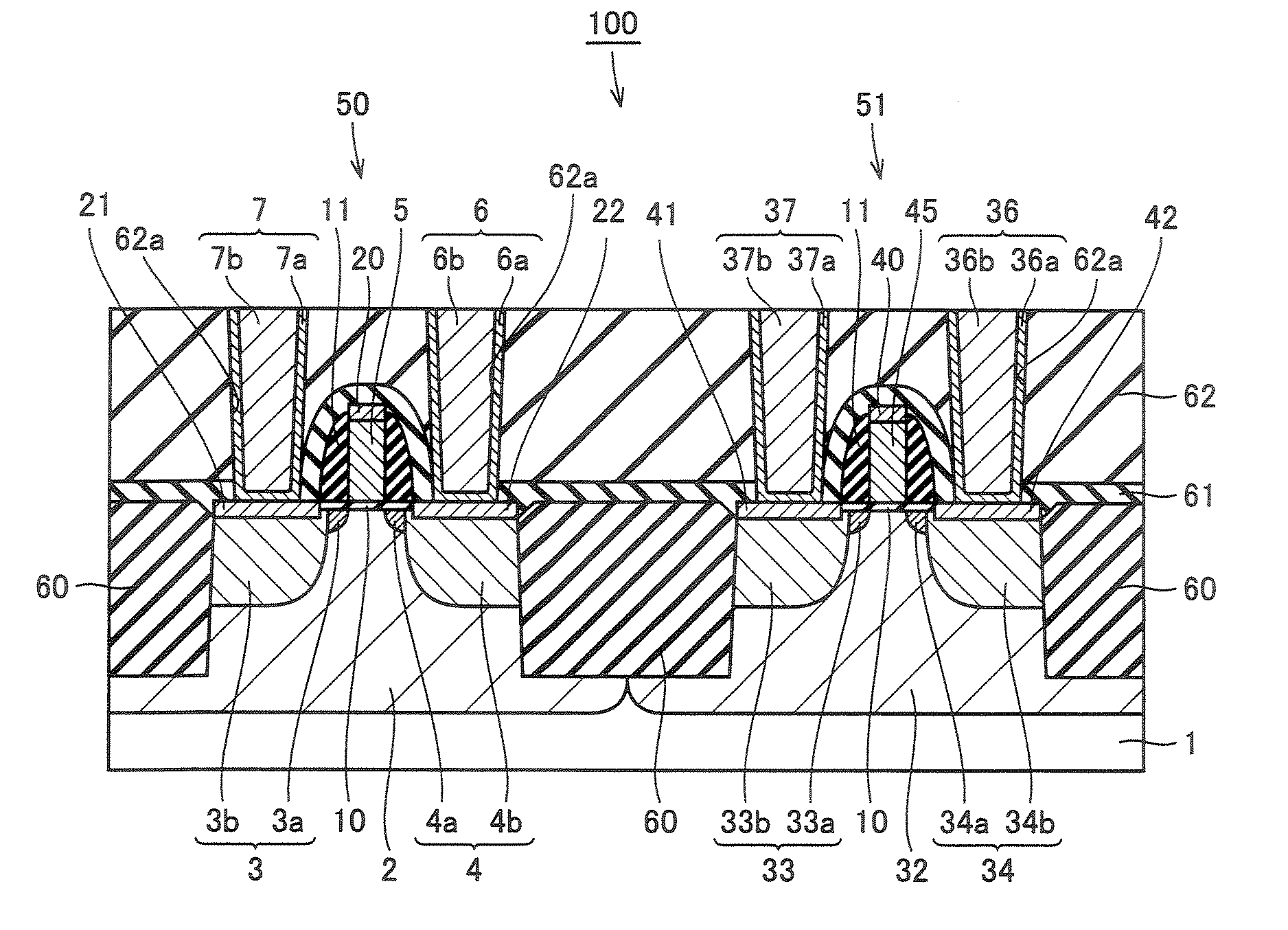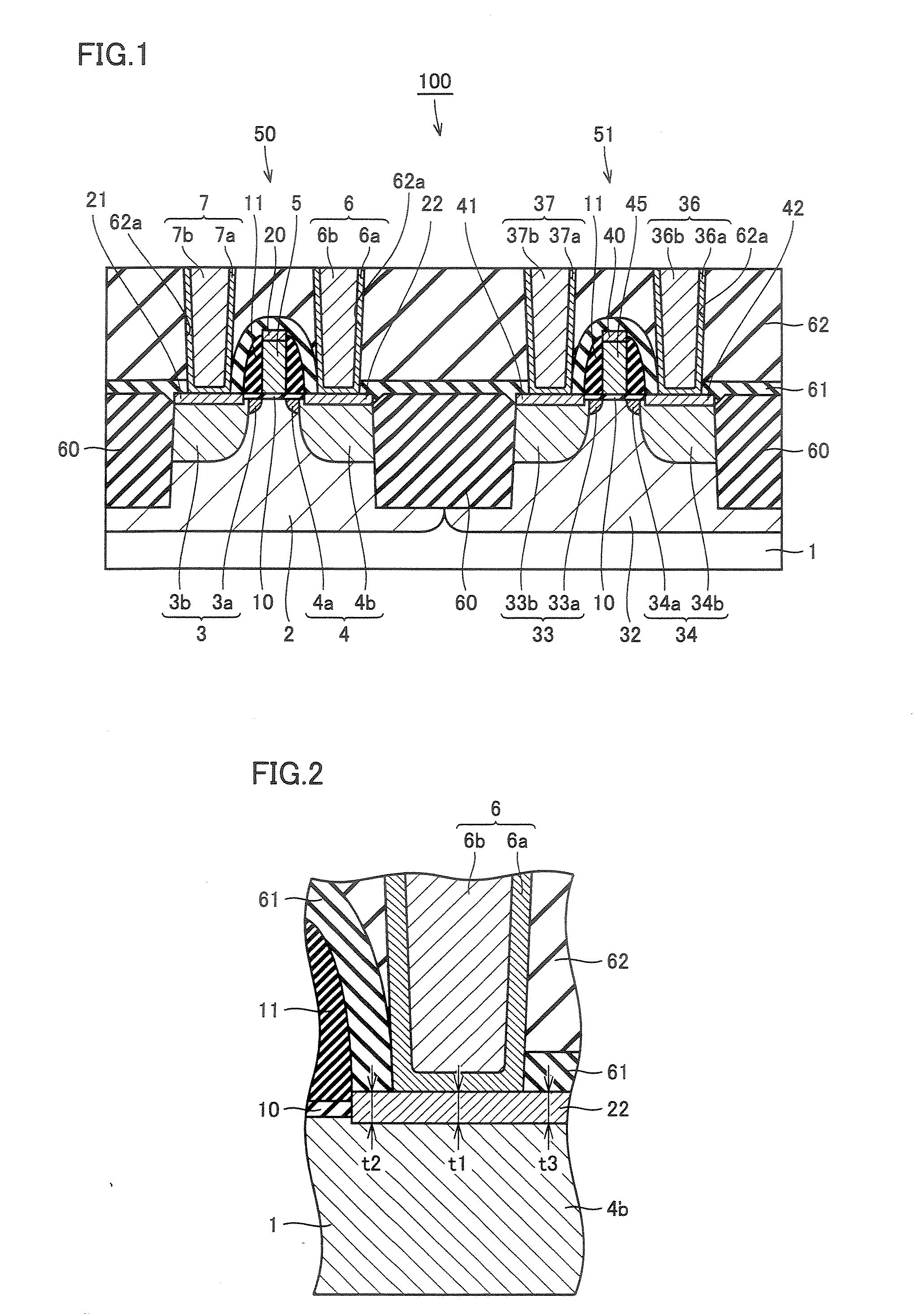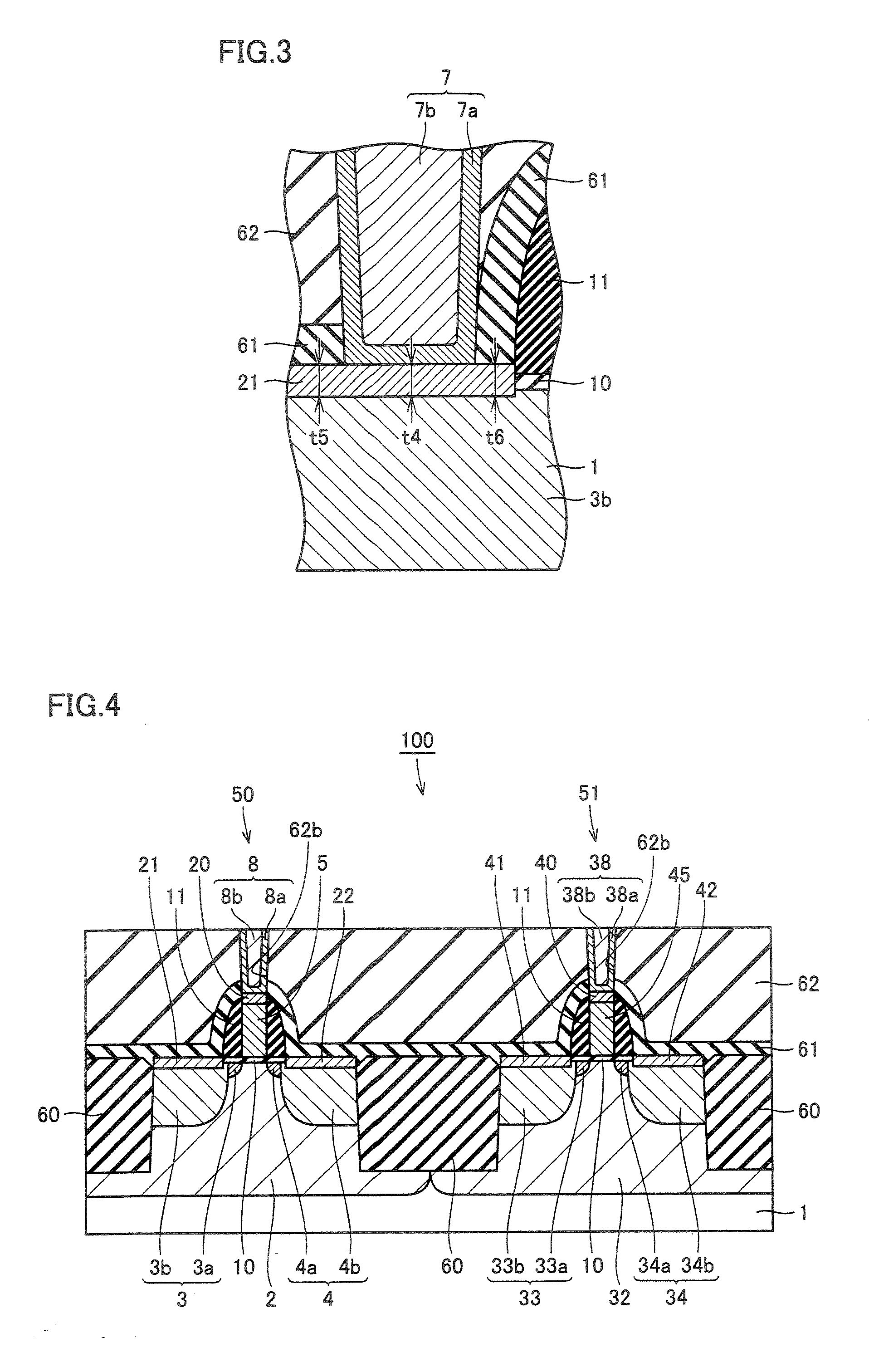Semiconductor device and method of manufacturing the same
a technology of semiconductors and semiconductors, applied in the direction of semiconductor devices, electrical devices, transistors, etc., can solve the problem of not completely removing the natural oxide film
- Summary
- Abstract
- Description
- Claims
- Application Information
AI Technical Summary
Benefits of technology
Problems solved by technology
Method used
Image
Examples
first embodiment
[0051]A semiconductor device and a method of manufacturing the same according to a first embodiment will hereinafter be described with reference to FIGS. 1 to 21. FIG. 1 is a cross section of a semiconductor device 100 according to the first embodiment. As shown in FIG. 1, semiconductor device 100 includes a semiconductor substrate 1, an isolated region 60 formed on a main surface of semiconductor substrate 1, an n-channel type Metal Oxide Semiconductor (MOS) transistor (hereinafter referred to as an nMOS transistor) 50 formed on the main surface of semiconductor substrate 1, and a p-channel type MOS transistor (hereinafter referred to as a pMOS transistor) 51 separated from nMOS transistor 50 by isolated region 60.
[0052]Semiconductor substrate 1 has a p-well region 2 and an n-well region 32 formed thereat, and nMOS transistor 50 is formed on a portion of the main surface of semiconductor substrate 1 where p-well region 2 is located, while pMOS transistor 51 is formed on a portion o...
second embodiment
[0103]A semiconductor device according to a second embodiment will hereinafter be described with reference to FIGS. 22 to 30. There may be a case where a configuration identical to or corresponding to that shown in FIGS. 1 to 21 described above, is denoted by the same reference character and the description thereof is not repeated.
[0104]FIG. 22 is a cross section of an nMOS transistor 150 in the semiconductor device according to the second embodiment. As shown in FIG. 22, p-well region 2 is formed in semiconductor substrate 1, and nMOS transistor 150 is formed at a portion of the main surface of semiconductor substrate 1 where well region 2 is located.
[0105]The nMOS transistor 150 is formed on the portion of the main surface of semiconductor substrate 1 where p-well region 2 is located, and includes insulating film 10 formed of a silicon oxide film, for example, gate electrode 5 formed on insulating film 10, and impurity regions 3 and 4 formed on portions of the main surface of semi...
PUM
 Login to View More
Login to View More Abstract
Description
Claims
Application Information
 Login to View More
Login to View More - R&D
- Intellectual Property
- Life Sciences
- Materials
- Tech Scout
- Unparalleled Data Quality
- Higher Quality Content
- 60% Fewer Hallucinations
Browse by: Latest US Patents, China's latest patents, Technical Efficacy Thesaurus, Application Domain, Technology Topic, Popular Technical Reports.
© 2025 PatSnap. All rights reserved.Legal|Privacy policy|Modern Slavery Act Transparency Statement|Sitemap|About US| Contact US: help@patsnap.com



